Standing vertically, fingers wrapped comfortably around its body where a circular purple backlight glows and inhaling through the mouthpiece, one could mistake the Lumen for a vape pen when in use; but this pocketable device with a nice, soft rubbery finish has more lofty goals. It claims to be the first device to hack your metabolism.
By analysing your metabolic activity from your breath, it gives you personalised dietary recommendations to help your body effectively shift between utilising fats or carbohydrates as a source of energy. In this way, you can lead a healthier lifestyle; and perform better at your workouts according to your own body’s metabolism.
This premise naturally intrigued us, so once we got our hands on a Lumen unit, we donned our hoodies to become “metabolism hackers” for the purpose of this review. Here’s what we learnt after using the Lumen for 6 weeks.
Il-lumen-ate me on how it works
The first thing that came to mind when we got the Lumen was: how does it do what it does? The answer is that it functions similarly as a breathalyser that measures carbon dioxide and oxygen levels in the air rather than alcohol content. The user performs a breath maneuver through the device – inhale deeply, hold for 10 seconds, exhale deeply – and the Lumen’s integrated sensor and flow meter measure the concentration of carbon dioxide in the breath.
More specifically, the Lumen calculates the respiratory exchange ratio (RER) which indicates the fuel source the body is predominantly burning. If there’s a high carbon dioxide concentration, it means carbs are predominantly used. If it’s low in carbon dioxide, the body is in a fat-burning state.
Until now, such an RER test could only be performed in clinics with bulky devices; was quite inaccessible; and was rather expensive and time-consuming. Lumen’s digital health approach democratises such a test; and brings in a device that literally fits in your pocket to output results within minutes.
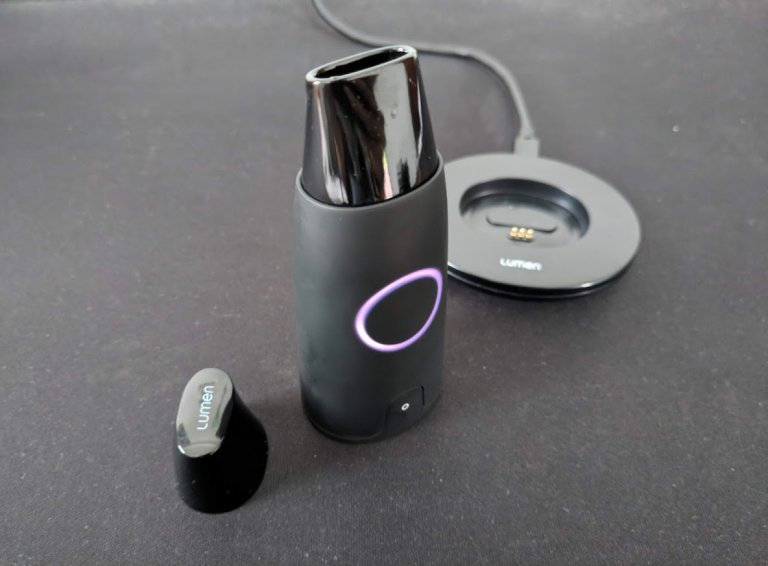
A validation study from the San Francisco State University even concluded that the Lumen provides results comparable to clinical RER tests. However, two of the researchers involved in this study work with Metaflow Ltd.; the company behind the Lumen. While this does not necessarily discredit the efficacy of the device, it should be taken with a grain of salt; especially given that the paper was in preprint and not peer-reviewed at the time of writing.
Nevertheless, the company does seem inclined to have scientific backing of their product. The founders previously published their own research detailing the technology behind the device and how it compares to regular RER tests. More recently, Metaflow Ltd. launched a clinical trial to guide pre-diabetics in maintaining a healthier lifestyle by tracking their metabolism.
While it would give the device more credit if it was tested by independent researchers and in more studies, it’s encouraging to see the company go the extra mile to test it clinically. This can further bring interest in the Lumen for future independent studies. We could not ourselves compare the Lumen’s results to a clinical RER test due to it being an expensive and inaccessible procedure; so we went on to test the digital health gadget we had in our hands.
Getting started as a “metabolism hacker”
Even though taking readings from the Lumen sounds easy (how difficult can breathing be, right?), getting started is another affair. For the initial setup, you will have to pair the device to the companion smartphone app. It guides you on how and when to take breaths with your Lumen. Inhaling or exhaling too quickly or too slowly will result in an incorrect measurement. It requires you to perform these actions again but at a proper pace. Even after the initial guide, it takes a few tries before taking proper readings with the device.
Lumen is quite sensitive as the app will notify an improper reading if your breaths are affected by simply standing, or if you have a slightly elevated heart rate after climbing a flight of stairs. Getting incorrect readings can get frustrating at times. You’ll have to wait and repeat the whole breathing exercise again (for the app to output a result, you’ll have to perform 2-3 such manoeuvres). But luckily the whole process takes only around 1-2 minutes. Afterwards, the app gives you a score on a scale of 1 to 5. A score of 1 and 2 means you’re burning mostly fat. 3 means you are burning both carbs and fats. Finally, a score of 4 and 5 means you are burning mostly carbs.
The first reading must be taken about 30 minutes after waking up, before eating anything. This will “unlock your day” as the device will analyse whether you’re in a fat- or carb-burning state. It also takes into consideration your sleep duration, steps taken and workouts from the previous day. It will thereby provide a meal plan for the day; consisting of the recommended amount of nutrients you should take for this particular day.
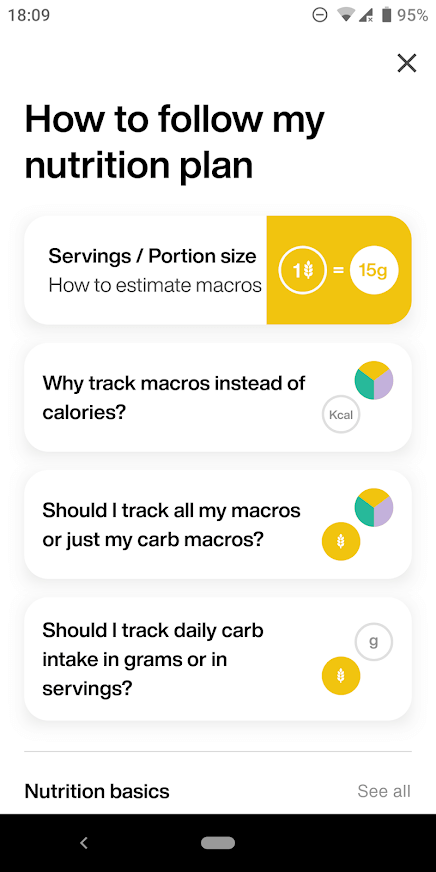
Does it really hack your metabolism?
By following the meal plans, Lumen aims to improve your “metabolic flexibility,” which it describes as “the ability of the human body to switch back and forth between fat and carbohydrates based on their availability.” Lumen bases this concept from a series of literature and indicates it as a “Lumen Flex score.” This is graded on a scale of 0-21 which is obtained 4 weeks after using the device. The higher the score, the more flexible is your metabolism; and you can subsequently improve the score by following the dietary guidelines Lumen provides.
Developing a more flexible metabolism helps you switch between metabolising carbs and fats effectively so as to achieve your dietary goals. It can improve your insulin sensitivity, stabilise your blood glucose level and burn more fat for energy. It’s a delicate balance that’s achievable through proper management of one’s diet, lifestyle and workouts to lead to an overall better health. This is how athletes pair their training with a rigid nutrition plan and have professional nutritionists guiding them. The Lumen aims to be such a personal nutritionist for everyone; but a digital, less expensive and readily-available one.
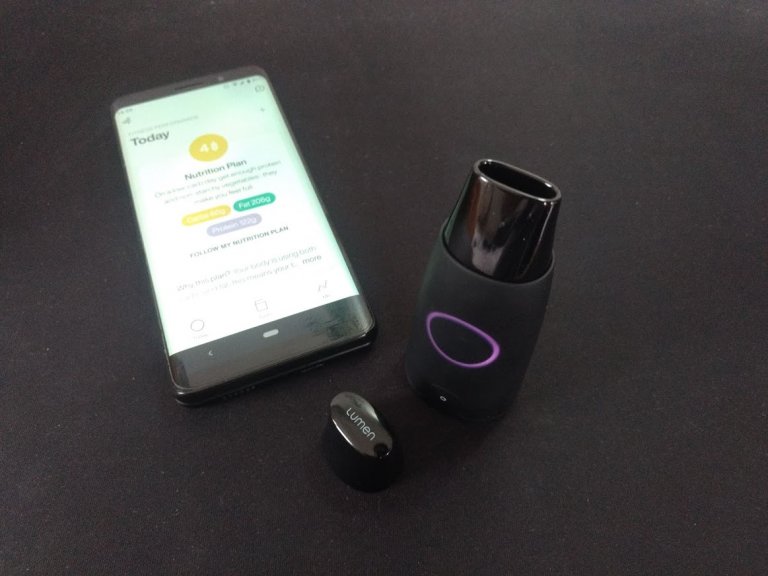
Most of the “metabolism hacking” happens within the app rather than with the device. The app is well designed with insightful articles regarding your readings, nutrition guidelines; and more interestingly, it gives you handy, tailored meal suggestions based on your daily macronutrient recommendation and several alternatives. For instance, on a low-carb day, it can recommend grilled catfish and broccoli for lunch. Or you could substitute it for zucchini noodles with crabmeat. If you have dietary restrictions, the app takes those into account as well. Some days the app can recommend additional carbs from fruits just before a workout to improve performance.
We found that attaching a score to our eating habits and workout performance does help in making us more mindful about what we eat. A food log feature might be helpful in the app to keep track of what goes through the user’s digestive system; but even without it, seeing how that late-night pizza slice gave you a high score in the morning will make you think twice before indulging like this again. Or noticing that you are still burning carbs rather than fat after that afternoon run because of that extra pasta serving for lunch confers a sense of guilt. Seeing how the Lumen reports correctly on our metabolism following meals and activity gives a clear, quantified picture of one’s improvements.
More tracking than hacking
All things considered, the Lumen by itself does not hack your metabolism. Rather, it tracks it, while it’s up to you to do the hacking. If you are trying to improve your dietary habit and improve your workout performance, then the $350 it costs might be worth it, instead of hiring a personal nutritionist. Since most of us are mostly staying at home currently, we might have gone in and out of shape like a sinusoidal curve; and such a handy, personalised guide proves useful for tackling this issue. But to really see the benefits, you’ll have to stick to using it and following its recommendations.
Indeed, using the Lumen requires some commitment. If you forget to take a reading in the morning or ate something and only then realised you should have used the Lumen beforehand, it can be quite annoying. The first 4 weeks involves diligently taking measurements in the morning, after each meal and before and after each workout; this initial adoption requires quite some dedication. After those 4 weeks, you’ll take readings only about 1-3 times a day; and once you integrate it in your routine, you can better appreciate its influence. You could further pair your Lumen use with a smart scale to analyse how your body composition changes by following your new diet plans.
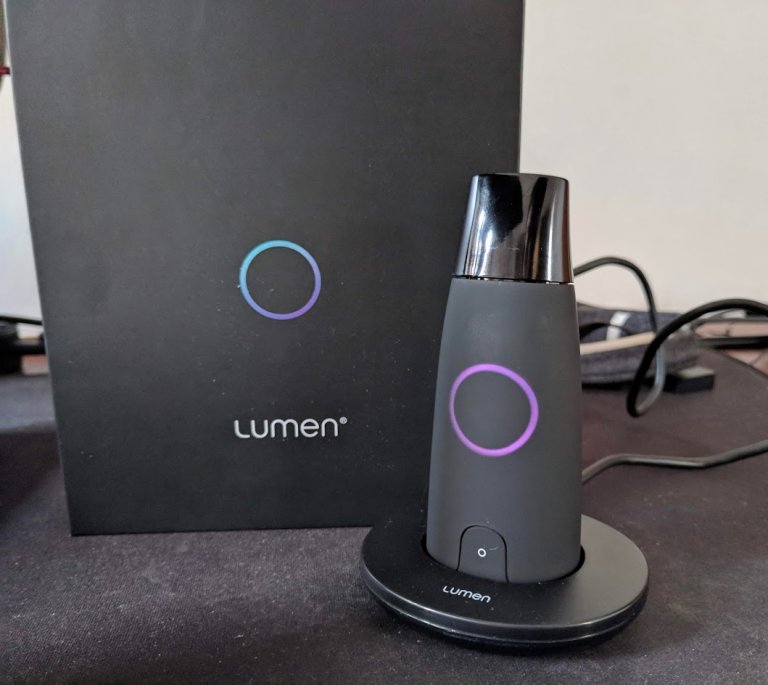
However, there is still room for improvement with the Lumen, especially given the steep price point. As mentioned, the food log feature feels missing in the app. Additionally, it integrates step counts from Google Fit; but we would like to see more metrics like sleep quality and detailed workouts integrated as well. This will help better visualise how the meal plans influenced those results as well. The company recently partnered with Garmin to integrate more health data; and we hope that the same will be available soon for Wear OS, Fitbit and Apple Watch users too.
The Lumen app also requires an internet connection to provide its analysis. It’s not ideal if you’re going to an area with poor reception. For example when on a hike and want to analyse how your metabolism fares before and after the activity. Of note, a Lumen device is usable by only one person per app. If you want to share the device, you’ll need to install the app on another phone. Allowing multiple users on a single app could prove handy and including swappable mouthpieces would also be welcome. Especially since we’ve all become germaphobes since 2020.
Nevertheless, as far as a personal, accessible and digital nutritionist goes, the Lumen does a fine job and delivers quite a unique experience.
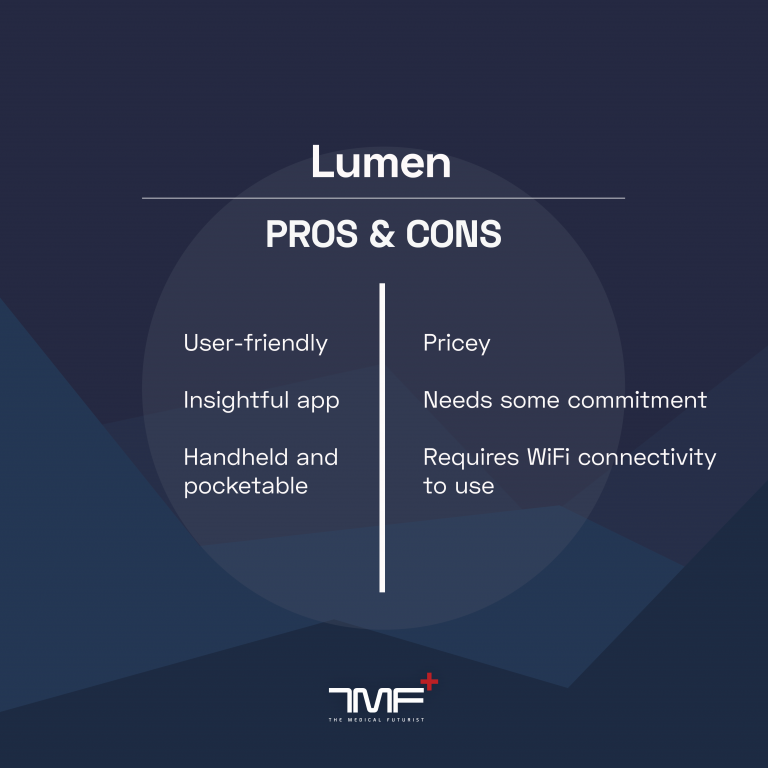
Original article by: The Medical Futurist










